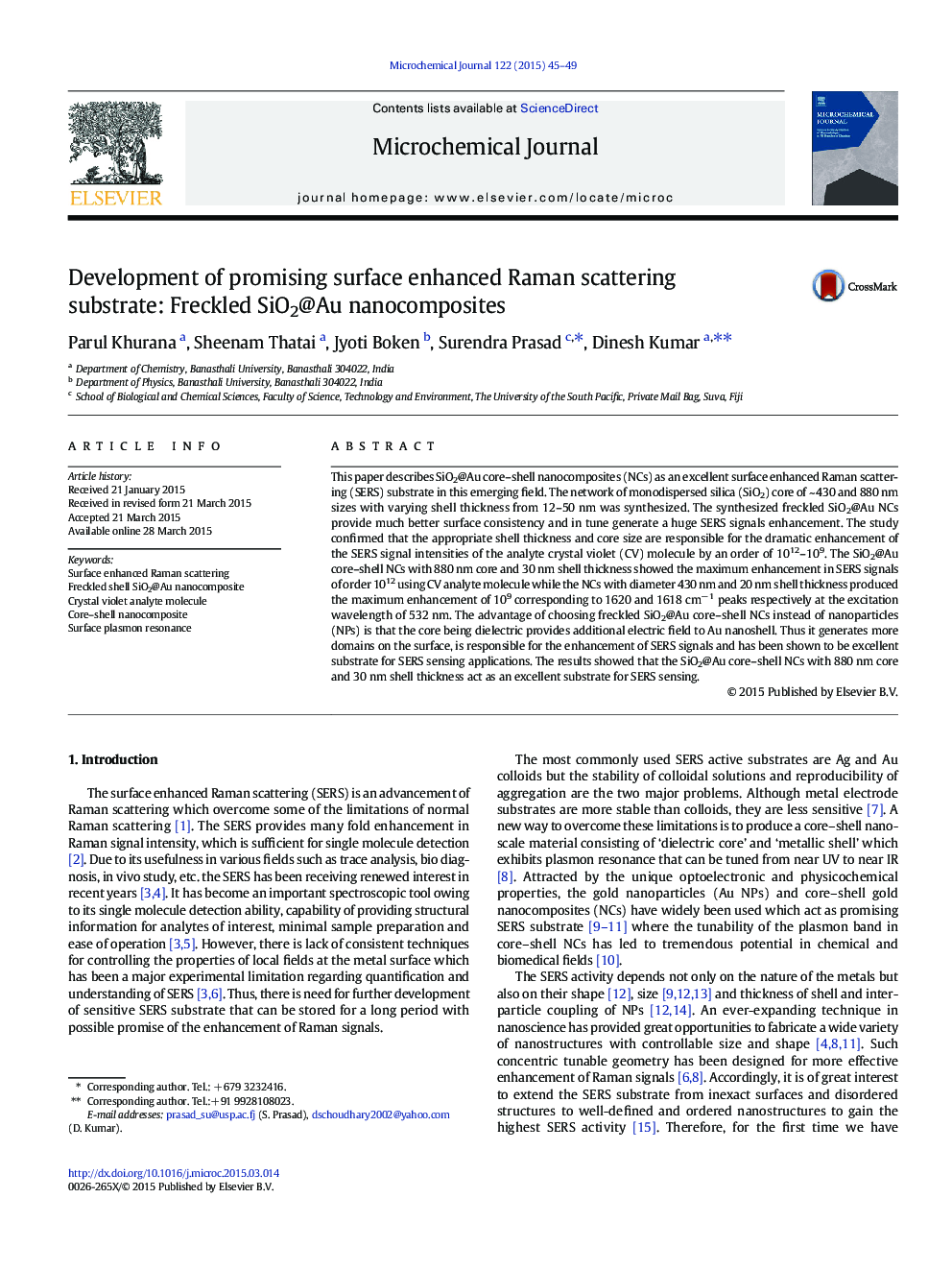| Article ID | Journal | Published Year | Pages | File Type |
|---|---|---|---|---|
| 1227758 | Microchemical Journal | 2015 | 5 Pages |
•Freckled shell nanocomposites of 430 and 880 nm core and shell thicknesses 12–50 nm were synthesized.•SERS signal enhancement of orders 1012–109 using crystal violet analyte molecule was achieved.•SiO2@Au core–shell with 880 nm core and 30 nm shell produce enhancement SERS signal of order 1012.•SiO2@Au nanocomposites with 880 nm core and 30 nm shell act as excellent SERS substrate.•Apposite nanocomposite material acts as an excellent substrate for SERS sensing.
This paper describes SiO2@Au core–shell nanocomposites (NCs) as an excellent surface enhanced Raman scattering (SERS) substrate in this emerging field. The network of monodispersed silica (SiO2) core of ~ 430 and 880 nm sizes with varying shell thickness from 12–50 nm was synthesized. The synthesized freckled SiO2@Au NCs provide much better surface consistency and in tune generate a huge SERS signals enhancement. The study confirmed that the appropriate shell thickness and core size are responsible for the dramatic enhancement of the SERS signal intensities of the analyte crystal violet (CV) molecule by an order of 1012–109. The SiO2@Au core–shell NCs with 880 nm core and 30 nm shell thickness showed the maximum enhancement in SERS signals of order 1012 using CV analyte molecule while the NCs with diameter 430 nm and 20 nm shell thickness produced the maximum enhancement of 109 corresponding to 1620 and 1618 cm− 1 peaks respectively at the excitation wavelength of 532 nm. The advantage of choosing freckled SiO2@Au core–shell NCs instead of nanoparticles (NPs) is that the core being dielectric provides additional electric field to Au nanoshell. Thus it generates more domains on the surface, is responsible for the enhancement of SERS signals and has been shown to be excellent substrate for SERS sensing applications. The results showed that the SiO2@Au core–shell NCs with 880 nm core and 30 nm shell thickness act as an excellent substrate for SERS sensing.
